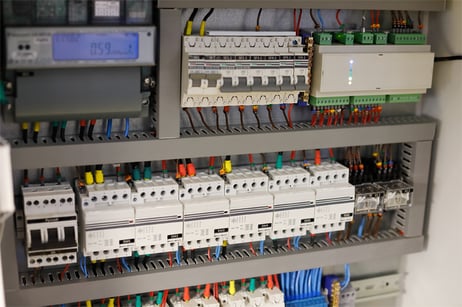 Building Management Systems (BMS) are typically classified as either proprietary (closed) or non-proprietary (open).
Building Management Systems (BMS) are typically classified as either proprietary (closed) or non-proprietary (open).
Proprietary systems integrate exclusively with equipment and software produced by the company that manufactured the system.
In contrast, non-proprietary building control systems can integrate with various equipment manufacturers and software platforms. They also offer a wide range of value and benefits that closed systems cannot.
Read on to learn more about the advantages and disadvantages of both open and closed BMS systems.
Drawbacks to Purchasing a Proprietary (Closed) Building Management System
Imagine buying a car that could only be serviced and cared for by the dealership that sold it to you—and you could only buy parts exclusively created by that dealer’s manufacturer. You’d lose the ability to purchase parts from the local auto parts store. Your local mechanic would no longer be able to handle even the easiest tune-ups and oil changes.
The problem with closed BMS systems is that you lose freedom of choice and the ability to decide who maintains and services your system. With a proprietary technician—what if they just aren’t as responsive as you’d like them to be?
Well, too bad. When you get locked into a closed platform BMS system, you also get locked into the manufacturer service plans, contracts, and technicians.
Other drawbacks to using a proprietary BMS include a lack of options and the problem of getting outfitted with a system that might not be the best fit for your building. Closed systems often have a limited selection of equipment.
There could be scenarios where a customer is outfitted with the most viable option available from that manufacturer while a better fit was available on the market. These situations can significantly hinder the facility management team from achieving its goals.
A closed BMS system also might have limited upgrade options, forcing the customer to purchase an entirely new system instead of a less expensive legacy upgrade.
Are There Any Benefits to Choosing a Proprietary (Closed) Building Control System?
If there is any benefit to a closed platform system, it’s that you’re dealing with a single company and likely the same service technician year after year. Over time, your facilities team could become more familiar with the equipment and mechanical components and might be able to identify issues and problems more efficiently. In reality, there is no reason these same advantages couldn’t be true for non-proprietary providers.
What Are the Benefits of Purchasing a Non-Proprietary (Open) Building Control System?
Open protocols and building control systems can integrate with a wide range of equipment and software platforms. Also, any qualified service technician can service them.
It’s possible to combine existing equipment with new equipment seamlessly, regardless of the manufacturer. This is because open platform BMS equipment gets built to specifications that allow interchangeability.
The most significant benefit an open BMS system has over its closed counterpart is the ability to create a control system that fits the budget and needs of the customer. The open architecture also allows for more flexibility and customization options.
Are There Any Disadvantages to Non-Proprietary (Open) Building Management Systems?
If you’ve already invested the upfront cost in a proprietary building automation system (BAS), you’re better off staying with that company until your system becomes obsolete or stops functioning. The upfront cost of any BMS outweighs the advantages of replacing that system until such a point in time that it’s no longer useful.
The only disadvantage to open systems is that they can’t tie in with all these different proprietary systems. The manufacturers of those proprietary systems intentionally lock people into only being able to use their equipment.
Fortunately, many proprietary manufacturers now see the advantages of open communication, and many have started offering industry-open standard versions. Ultimately, the more companies and building owners that move toward the open standard, the better off consumers will be.
Benefits of Upgrading from a Closed BMS
If you have a closed BMS system, it might be possible to upgrade to an open one and take advantage of the advanced building technology features available. This way, you don’t have to buy an entirely new system—you can perform piecemeal upgrades as old parts fail.
Benefits of upgrading to an open BMS system include:
- Robust security systems
- Improved tenant comfort
- Energy efficient
- Better hardware
- More flexibility
Open BMS Systems from MACC
You’re much better off buying a system built using the industry open standard if you’re in the market to purchase a new BMS. If you’ve already purchased a closed building automation system, you’re better off sticking with it for the foreseeable future.
Contact us to learn more about the difference between open and closed building management systems, or take our Performance Challenge to help determine if the system in your building is proprietary or non-proprietary.














